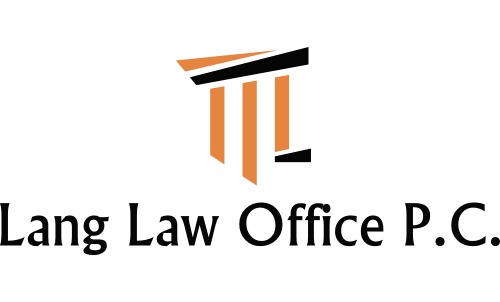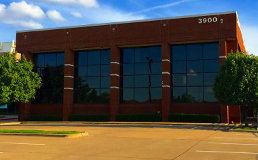In the balance sheet, the realisation principle requires adherence to the historical cost of the assets until the asset is sold, despite any changes in the value of the assets (resources) held by a business enterprise. Historical cost is the preferred method of valuing assets because it can be proven. It is easy for a company to look at the title of a piece of property and see what was paid for it.
Those expenses are then subtracted from her gross profit to obtain her net profit of $95,000. Each item of cost should be related to its cause as minutely as possible and the effect of the same on the various departments should be ascertained. A cost should be shared only by those units which pass through the departments for which such cost has been incurred.
- Cost accounting is helpful because it can identify where a company is spending its money, how much it earns, and where money is being lost.
- HCA, thus, is forced to exclude highly relevant information about changes in the value of resources that may have supervened between their acquisition and use or between their acquisition and the accounting date if they are still then held.
- The historical cost principle (also called the cost principle) states that virtually all business assets must be recorded as the value on the date the asset was bought or assumed ownership.
- Historical Cost is clearly the most objective, reliable and verifiable value of the lot.
- Cost accounting allowed railroad and steel companies to control costs and become more efficient.
However, this method also requires more frequent adjustments to ensure accuracy. Usually, historical cost accounting is more problematic with long-term assets. Long-term assets are items of value that you do not expect to convert into cash within one year. Examples of long-term assets include buildings, land, vehicles, and equipment.
Yet with the development of business and industry, its objectives are changing day by day. Historical cost is often calculated as the cash or cash equivalent https://kelleysbookkeeping.com/ cost at the time of purchase. This includes the purchase price and any additional expenses incurred to get the asset in place and prepared for use.
The cost includes expenses connected with the purchase, like sales tax, setup, delivery, installation, and testing. The majority of assets are reported based on their historical cost, but one exception is short-term investments in actively traded shares issued by public companies (i.e. held-for-sale assets like marketable securities). Historical cost is still a central concept for recording assets, though fair value is replacing it for some types of assets, such as marketable investments. The ongoing replacement of historical cost by a measure of fair value is based on the argument that historical cost presents an excessively conservative picture of an organization.
Written by True Tamplin, BSc, CEPF®
It is incorrect to say that the historical cost accounting principle requires no change in the value of items in the Financial Statements. One of the main advantages of using the Historical Cost Convention is that it provides a reliable and consistent standard for valuing assets and liabilities across different companies. This makes it easier to compare financial statements between different companies. Furthermore, this convention provides a more accurate picture of a business’s historical performance as opposed to relying on estimated values. The historical cost principle shows the actual amount you paid for an asset, ensuring that an objective cost was recorded. The argument for using historical costs is that accounting is concerned with past transactions and that the information and reports that accounting generates need to be consistent and comparable.
The current market value of the machine in its present condition is $6,000. New machine with the same specification would cost $40,000 today due to inflation. Historical Cost is the original cost incurred in the past to acquire https://quick-bookkeeping.net/ an asset. Upgrading to a paid membership gives you access to our extensive collection of plug-and-play Templates designed to power your performance—as well as CFI’s full course catalog and accredited Certification Programs.
Historical cost definition
Economic cost allows you to look at a variety of “what-if” scenarios and see exactly how those scenarios might affect your business and your bottom line. A number of objections are generally raised against the introduction of costing on various grounds. It provides statistical data on the basis of which future estimates are prepared and quotations are submitted.
Cost Accounting vs. Financial Accounting
Mark-to-market is dependent on a larger set of factors, such as demand, supply, perishability, and duration of asset holding by the company. The scientific management movement led by Taylor gave impetus to the development of cost accounting because it contributed to the use of standard costs in planning manufacturing operations and in evaluating performance. Thus, cost accounting relates to the collection, classification, ascertainment of cost and its accounting and control relating to the various elements of cost. Historical cost is the cash or cash equivalent value of an asset at the time of acquisition. Imagine if someone were to have purchased an acre of land 10 years ago for $10,000 and that land is now worth $20,000.
Implicit costs
One of the key financial statements is the balance sheet, which shows the assets, liabilities, and equity at the end of the most recent reporting period. The historical cost concept implies that the balance sheet represents a historical record of past transactions and their impact on assets, liabilities, and equity. This means that the amounts shown are unlikely to approximate market values. If an asset was purchased on the balance sheet date 10 years ago, then it may well be market value, but it is the market value at that point in time. The mark-to-market method of accounting records the current market price of an asset or a liability on financial statements.
Other valuation or costing methods like replacement cost or current cost fluctuate with the market and economy. If these methods were used, the company would report https://bookkeeping-reviews.com/ the same piece of property at different values every year based on the market. For accounting purposes, assets change in cost through depreciation or amortization.
Historical cost concept is a basic accounting principle that has traditionally guided how assets are recorded in the books. This is changing lately, with a greater emphasis in accounting standards, on fair valuation and impairment testing. Under the historical cost basis of accounting, assets and liabilities are recorded at their values when first acquired. The capital maintenance in units of constant purchasing power model is an International Accounting Standards Board approved alternative basic accounting model to the traditional historical cost accounting model.
Mark-to-Market vs. Historical Cost
With a few exceptions (stocks and bonds, for example), all other business assets are recorded using the historical cost principle. These assets can be anything from equipment and computers to vehicles, land, and buildings. Generally, the cost principle or historical cost principle requires that an asset should be reported at its cash or cash equivalent amount at the time of the transaction and should include all costs necessary to get the asset in place and ready for use.



